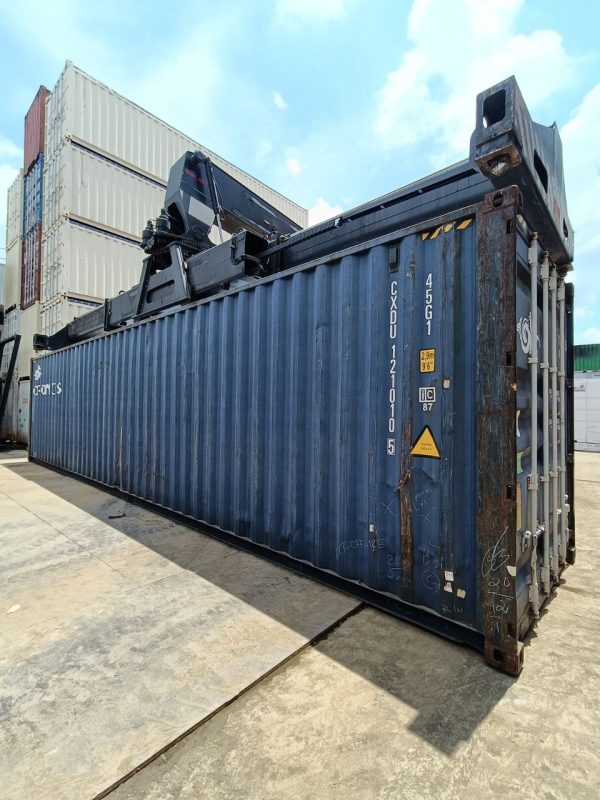Insulation Woes: Tackling Temperature Control in Container Offices

In recent years, container offices have surged in popularity due to their versatility, affordability, and unique aesthetic appeal. These modular spaces, often repurposed shipping containers, offer a creative and efficient solution for a variety of needs, from remote workstations to pop-up shops. However, one significant challenge that often arises with container offices is temperature control. Unlike traditional buildings, container offices can experience extreme fluctuations in temperature, making effective insulation crucial for comfort and energy efficiency. Here’s a detailed look at how to address these insulation woes and maintain a comfortable environment in your container office.
Understanding the Insulation Challenge
Container offices, typically made of steel, are highly conductive materials, meaning they readily transfer heat and cold. During hot weather, the metal can absorb and amplify external temperatures, leading to an uncomfortably hot interior. Conversely, in colder climates, the metal can lose heat rapidly, resulting in a chilly environment. This challenge is compounded by the fact that container offices are usually compact, with less space for traditional insulation methods.
Types of Insulation Solutions
- Spray Foam Insulation: One of the most effective methods for insulating container offices is spray foam insulation. This type of insulation expands upon application, filling gaps and creating a continuous barrier against heat transfer. It offers excellent thermal resistance (R-value) and can also act as a moisture barrier, reducing the risk of condensation and mold growth. Spray foam insulation is particularly effective in sealing the container’s seams and joints, which are common areas for heat loss or gain.
- Rigid Foam Board Insulation: Rigid foam board insulation is another popular choice for container offices. It is available in various thicknesses and provides a high R-value per inch of thickness. This type of insulation is easy to cut and fit into the container’s walls, ceiling, and floor, providing a solid thermal barrier. Additionally, foam boards are relatively lightweight, making them a good option for container interiors where space is limited.
- Reflective or Radiant Barrier Insulation: Reflective insulation or radiant barriers are designed to reflect heat rather than absorb it. These materials are often used in conjunction with other insulation types to enhance their effectiveness. Reflective insulation consists of a layer of reflective material, such as aluminum foil, which is installed on the interior surfaces of the container. This can significantly reduce the amount of heat entering or leaving the space, especially in hot climates.
- Mineral Wool or Fiberglass Insulation: Mineral wool (rock wool) or fiberglass insulation is another option for container offices. These materials offer good thermal and acoustic insulation and are relatively affordable. They are typically installed in batt or roll form between the container’s interior walls or ceiling panels. However, mineral wool and fiberglass insulation can be less effective at sealing gaps compared to spray foam, so they are often used in combination with other methods.
Installation Tips
Proper installation is key to maximizing the effectiveness of insulation in a container office. Here are some tips to ensure a successful insulation project:
- Seal Gaps and Joints: Before applying insulation, make sure to seal any gaps or joints in the container with a high-quality sealant or caulk. This will prevent drafts and improve the overall efficiency of the insulation.
- Consider Ventilation: Effective insulation should be complemented by proper ventilation. Container offices can trap moisture and stale air if not adequately ventilated. Install vents or an HVAC system to maintain air quality and comfort.
- Address the Roof and Floor: Don’t overlook the roof and floor when insulating your container office. Both areas can be significant sources of heat gain or loss. Insulate the roof with foam board or spray foam, and consider adding a thermal barrier to the floor to enhance comfort.
- Professional Installation: For the best results, consider hiring a professional insulation contractor who has experience with container offices. They can help you choose the right insulation materials and ensure proper installation.
Long-Term Benefits
Investing in high-quality insulation for your container office offers several long-term benefits. Proper insulation improves energy efficiency, reducing the need for excessive heating or cooling and lowering utility costs. It also enhances occupant comfort by maintaining a more consistent indoor temperature, regardless of external weather conditions. Additionally, well-insulated container offices are less prone to issues such as condensation and mold growth, contributing to a healthier indoor environment.
In conclusion, while container offices present unique challenges for temperature control, addressing these issues with the right insulation solutions can significantly enhance their comfort and efficiency. By choosing appropriate insulation materials and ensuring proper installation, you can transform your container office into a cozy, functional workspace that meets your needs throughout the year.

